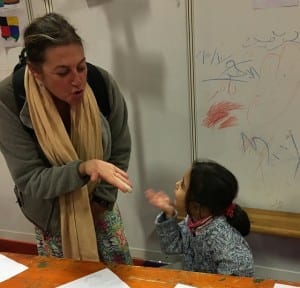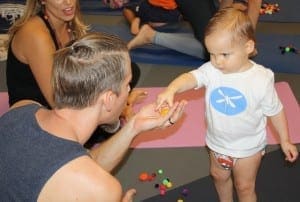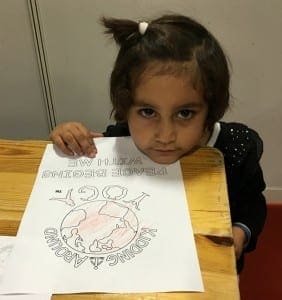How do we teach kids about giving and being gracious?
What behaviors demonstrate gratitude?
From a young age we tell kids they need to say thank you when ever they receive something. Kids lea
As we approach Thanksgiving in the United States, here are some ways to teach kids to connect the words ‘thank you’ with the action being performed and the feelings experienced by the people involved in the exchange. Remember to follow the activity with a discussion about how it made the kids feel!
Here are four activities to help kids learn to express and receive gratitude:
1. Growing Wall of Gratitude: This activity is great for right before or right after ‘The Secret Garden’ (this is what I call savasana in my kids’ yoga classes) or any quiet time. Take a huge poster board or long roll of craft paper and tack it up to a wall at a height all of the kids can reach. The bigger the better! Before class, cut out different shapes and colors of construction paper. Make sure they are large enough to write a sentence on. Give one piece of paper and a marker to each child either while they are in their Secret Garden or just at a quiet transition. Ask them to write down one thing that made them happy either in class that day or since the last class. Then have the kids attach their shape of happiness/gratitude to the poster using two-sided tape or adhesive s
2. The Compliment Train: This requires no supplies at all and is a great activity for when kids are gathered in a circle already. Ask the kids, one at a time, to give a genuine compliment to the person sitting to their right. I go clockwise just to make it easy for me to remember where we started. The kid receiving the compliment gets to practice being gracious and receiving compliments as well. The first child says “Joy, I like your shirt today with the butterfly,” and Joy responds with something like “Thanks for noticing the butterfly. Butterflies make me happy because of their colors.” Every child should have a chance to both give and receive a genuine compliment. Sometimes the receiving is harder than the giving!
3. Yoga Thank You Card: Have kids decorate or create a thank you card for the person who brings them to Yoga class. Have them keep the card Yoga themed. Maybe they draw pictures of what they do at Yoga class. Maybe they write a story about how class makes them feel. Of course, if you don’t teach Yoga, you could use the class theme of your choice. Each child delivers their thank you card to the provider of their ride when that person picks them up from class. This teaches kids that little things, like driving them places, are things that other people do for them and how to show appreciation for the act. If your child doesn’t take Yoga (yet), she can theme the card to whatever activity to which she regularly needs a ride. Maybe it’s a card for her school bus driver!
4. “How Would You Feel Without It” Game: This game can be played any time during the day. It is super fun if everyone is in a goofy, silly mood as you can come up with all kinds of wild things to fill in the blank! No supplies needed! Just ask the kids “what would you feel like without ___?” and fill in the blank with various everyday items or people. They will be surprised how different life would be without some of the things they consider “essential”. You may want to end with a discussion about how other people live without the items you all joked about and live with those feelings every day.
These activities can be adapted for almost any age. Even teenagers and adults love to know their efforts are appreciated. Sometimes receiving gratitude takes more practice than being thankful. Remember to always practice both!



